Disclosure: Meeple Mountain received a free copy of this product in exchange for an honest, unbiased review. This review is not intended to be an endorsement.
I was born and raised in Connecticut, only son to the youngest daughter of a man who made a modest fortune working as an executive for a local utility company. My grandfather, my mother, and I had season tickets for the Candlewood Playhouse, a regional theater that played host to touring productions of no insignificant quality. I briefly attended Northfield Mount Hermon, a boarding school in Massachusetts. I own, or rather I have owned over the course of my life, many polo shirts.
What I mean to say, dear reader, is that I have played golf.
Is it my first choice of activity? No. I’d rather be watching a movie, reading a book, riding my bike, or playing a board game. My parents enjoy it, though, and it’s nice to spend a few distraction-free hours with them. In some ways, I think golf serves for them the same purpose that board games do for me: it’s an activity that gets everyone off their phones and into the present moment. While it can be difficult to get my parents to sit down for a game together, Seabrook Studios and designer Ryan Boucher have attempted to bridge our very specific gap by releasing a second edition of 18 Holes, a hand-management golf game.
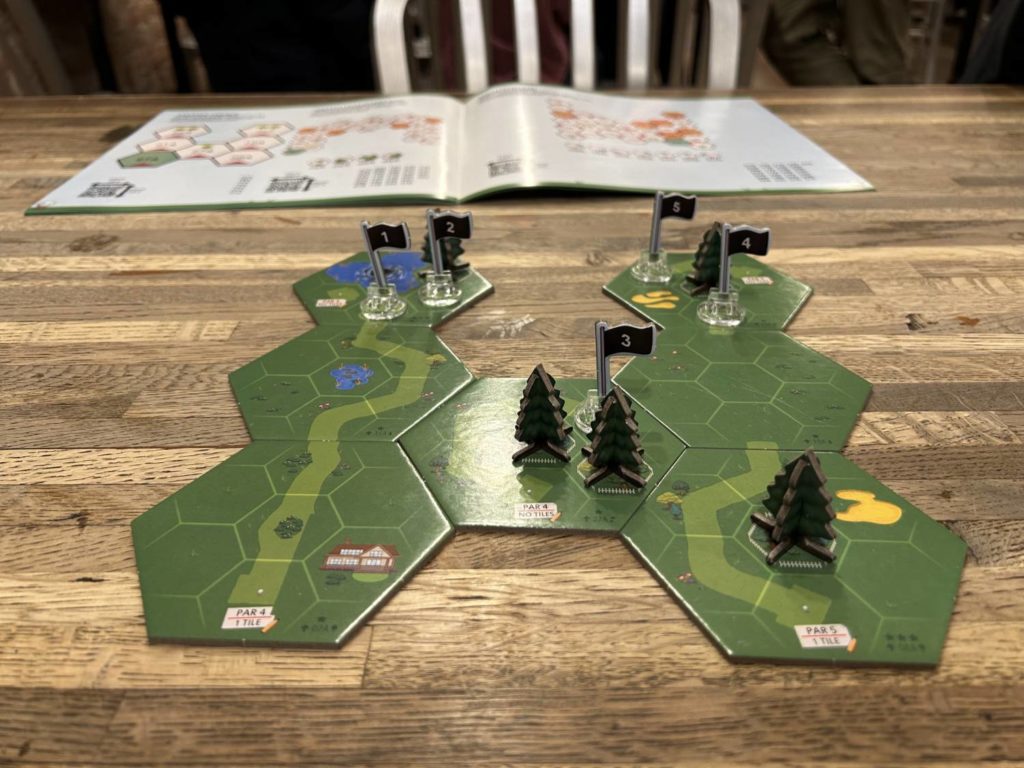
What’s Your Handicap
One of the joys of habitual golfing is in discovering the variety of courses. They all have their own unique character. Some are forgiving. Others are brutal. Some are tricky, with dramatic zigs and zags, while others are more straightforward, offering a pleasant few hours on the course. 18 Holes uses 50 or so double-sided hexagonal terrain tiles to give you access to the golf course of your dreams.
There are two ways to set up a course. You can lay out one of the many preset courses listed in the back of the manual and online, or you can use Quick Course Setup. The preset process is arduous. Seabrook Studios has made it as easy as possible, numbering the tiles and providing a sensible insert, but there is simply no good way to streamline this. Each numbered tile has to be found, set to the correct side, and rotated to face the correct direction relative to the others already on the table. Then, certain hazards—sand traps, lakes, trees—have to be placed onto certain spots on certain tiles.
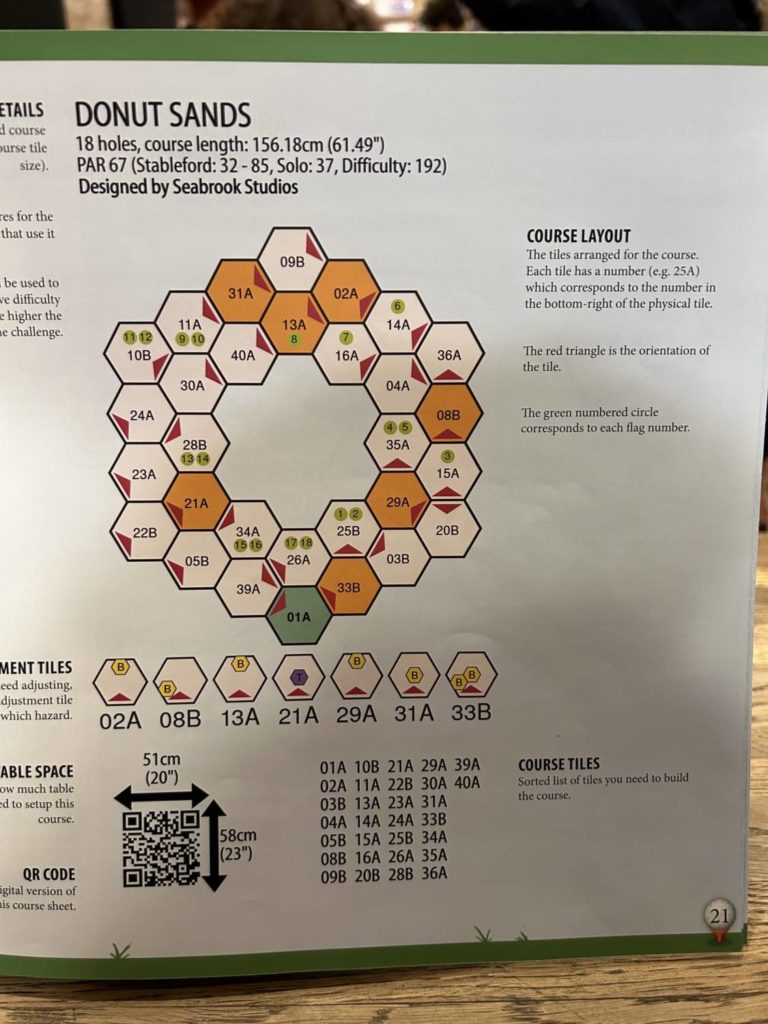
Quick Course Setup, on the other hand, involves separating the tiles into three piles: tiles with tee boxes, tiles with greens, and tiles with nought but fairways. You draw a tee box tile, which will tell you how many fairway tiles to put between the tee box and the green, then you place a green. There’s no way of knowing what your course is going to look like at the end of the day, but it gets you playing the game faster.
Tee Up
Once you’ve laced up your golfing shoes and grabbed a cart, you have to pick up your clubs. While a real-life golfer will have around 10-15 clubs in their bag, you have five. These can either be drafted or doled out based on pre-existing starter sets.
Each club gives you access to one or two of five different decks of cards, numbered 1-5. The higher the number, the more spaces your golf ball—represented here by a little wooden golfer—will travel. While you can’t know exactly what you’ll draw, it’s informed chaos. Just about all of the cards in the 4 deck, for example, will travel three spaces straight ahead, and then either continue moving straight for that final space, or, more likely, turn one space to the left or the right. Some clubs let you draw two cards and pick one. Some eliminate penalties for hitting out of certain areas of the board.
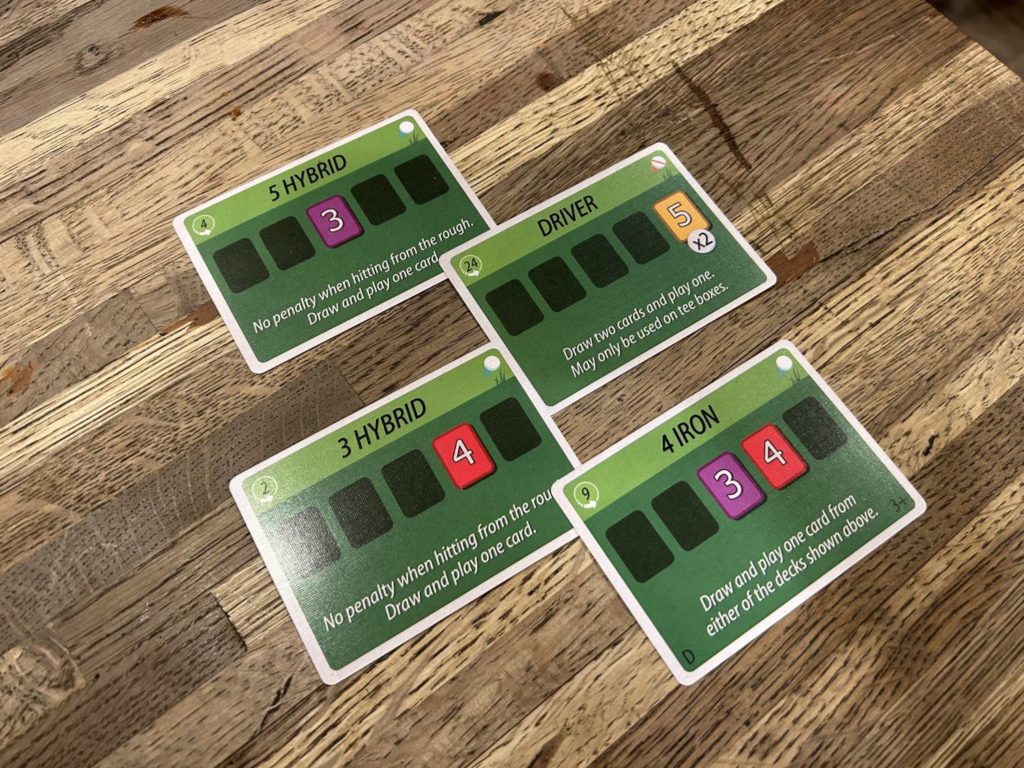
Each turn, all players simultaneously reveal which of their clubs they’re using. The clubs include numbers for a priority system, and the player with the lowest priority goes first. Once a club is used, it stays out of your hand until you have either used up all of your clubs or you spend a turn to take what you have used back. This is thematically questionable, of course. I guess you release each club at the end of your follow through?
Everyone starts on the first tee. From there, it depends on which rules variation you use. The rulebook for 18 Holes includes eleven different ways to play, such as standard match play, stroke play, and chaos golf. Match play is a race: the first player to each hole wins that hole, with the goal being to win the most holes. Stroke play is equivalent to real golf, tracking strokes over the entire course.
Chaos golf is my preferred variation: everyone starts on the first tee box, but you and your friends have booked the course for the afternoon, so you are under no obligation to complete holes in order. The first player to each hole gets five points, while the second gets two. Each player may end up taking an entirely different route.
Back at the Clubhouse
18 Holes did not end up doing much for me or the different groups I played it with. The first two groups didn’t use Quick Course Setup. We spent almost as long laying down tiles as we did playing. That certainly took some of the wind out of our sails, if I may use a different bepolo-shirted sporting metaphor. (I have never been sailing.)
The overall consensus was that the game wasn’t particularly interesting. For a little while, I wondered if I was bothered by the ways in which 18 Holes diverges from actual golf. During my first play, I was surprised to find myself perturbed by not being able to hit my initial tee shot over or around a tree, but then I had another idea.
I aimed my shot into the nearby tee box of the 13th hole, since it set me up for a good angle to the 1st green. Try that on a real course and you’ll get escorted off. It was weirdly thrilling, bordering on transgressive. That kind of creativity is largely what’s missing for me elsewhere. Heck, if anything, the game is maybe a bit too much like golf. Not only that, but 18 Holes is designed around the premise that all the in-game players are good golfers. Allow me to suggest that that is a mistake.
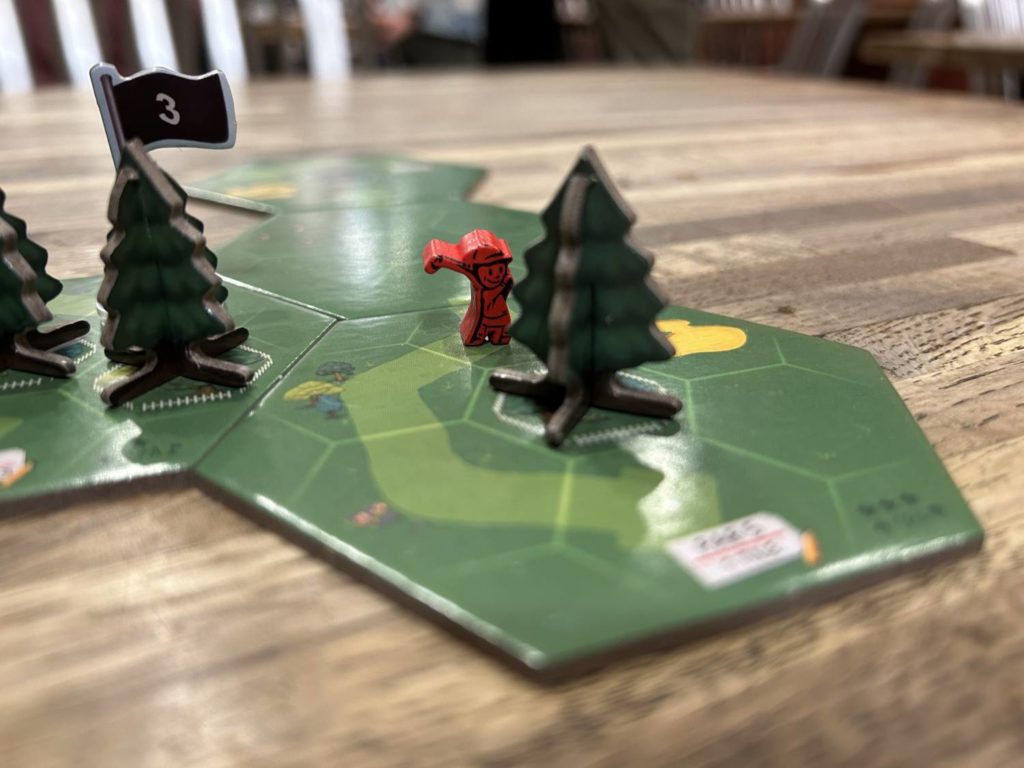
Golf is a game of execution. Hitting a ball straight down the fairway is not interesting. What makes hitting a good fairway shot so rewarding, so memorable, is the impossibility of doing it. It’s planting your feet the right distance apart. It’s setting the club at just the right part of your stance relative to the ball. It’s centering yourself, clearing your head, and never once letting your gaze slip from the ball. It’s taking a deep breath and exhaling, feeling the last bits of air ease out of your lungs as you finally wind up and take a swing while you try not to bend your knees or drop your shoulders or over-rotate or lift your head.
That, that impossibility of coordination, that is why people keep playing golf. For those fleeting moments when it all lines up. In 18 Holes, we are already good at all of that. There is little challenge to the execution. That means 18 Holes is a game of angles and light hand management. It is simultaneously too predictable and not predictable enough. The fact that clubs stay out of your hand until you’ve used them all theoretically encourages you to think ahead, but the slight variance in the hit cards means that that planning probably won’t work out. The planning ahead is all you’ve got, though, as far as something to sink your teeth into. So that’s weird.
We should be bad at golf in 18 Holes. Shots should go every which way. You should be handed absolutely wild slices and hooks—the ball breaking way to the left or the right—and use those flight patterns to try and cobble together a solution. If I’m going to play golf purely as a game of angles, I want it to be bonkers. I’m not alone in that. Everyone loves putt putt.


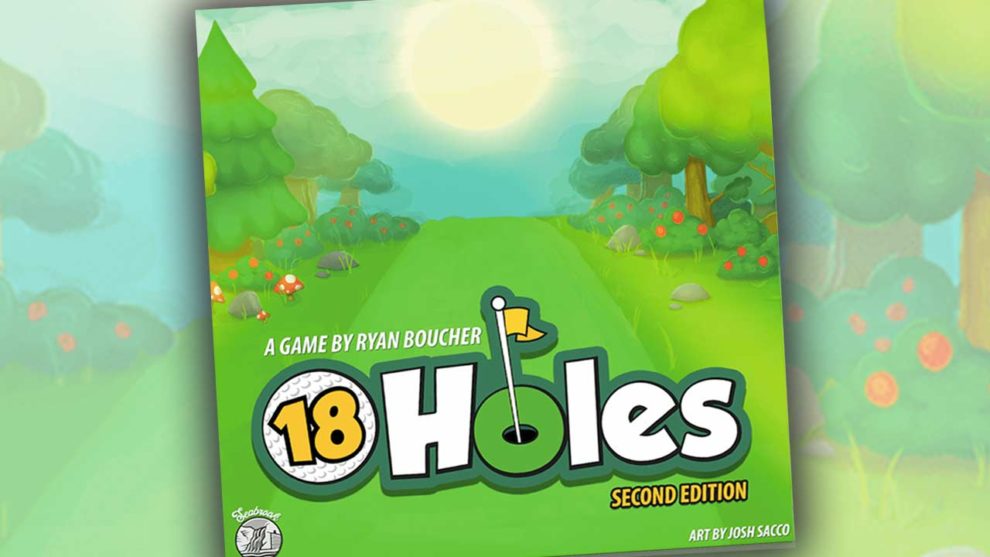









This is a brutal review that I enjoyed immensely. 5/5 would read again